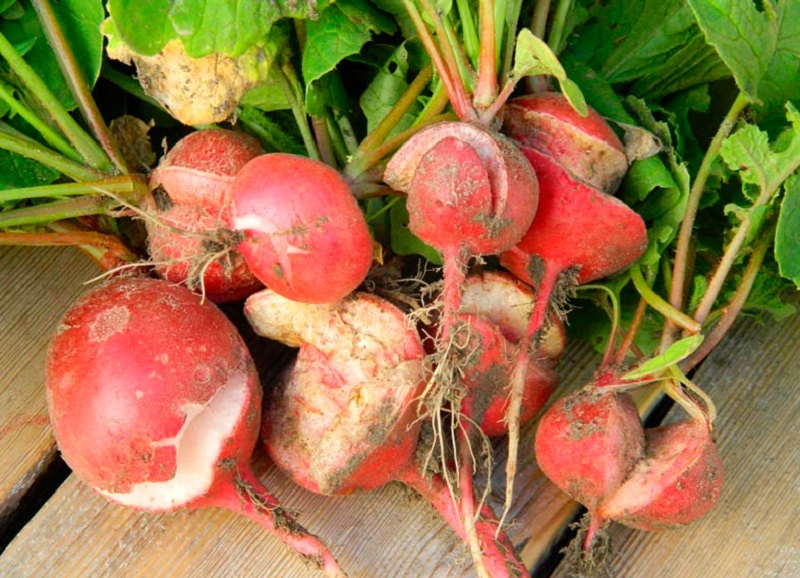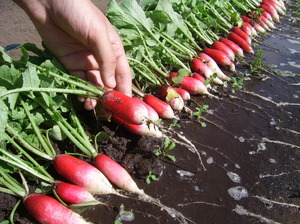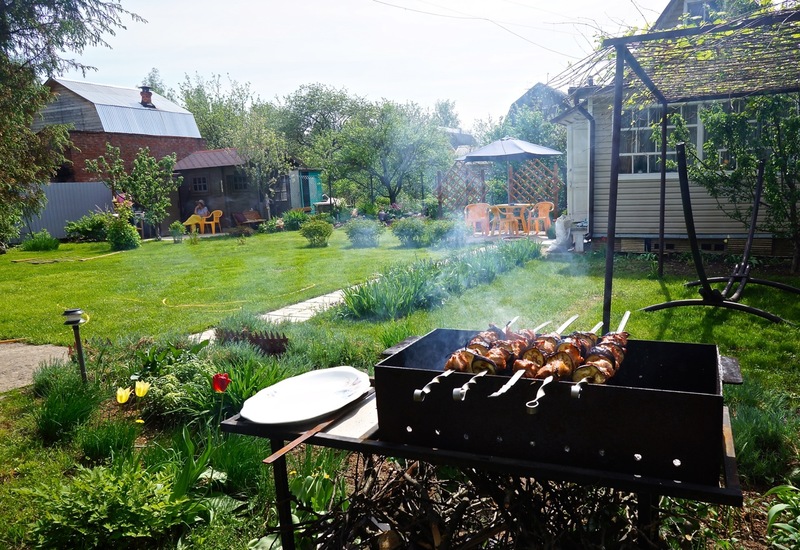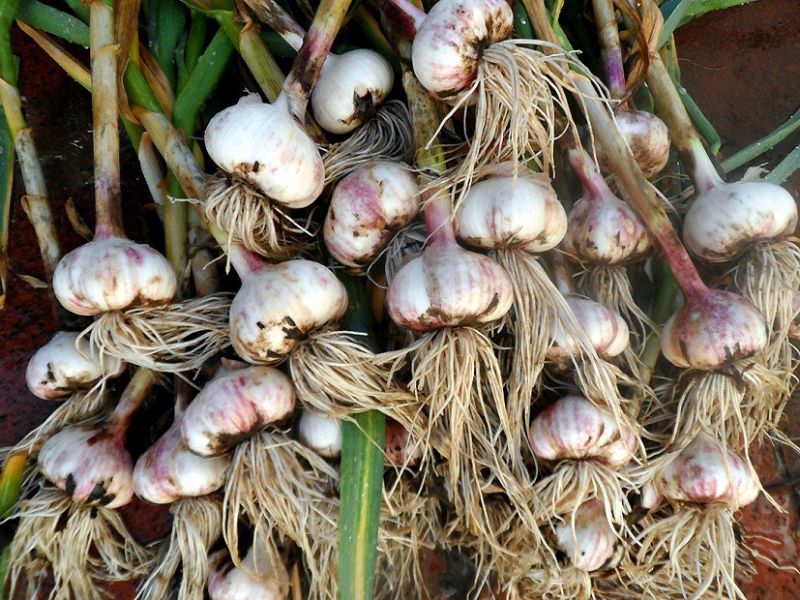It seems that for any summer resident there is nothing easier than growing radishes in the garden. But even this unpretentious root vegetable can upset you with a poor harvest of small and tasteless fruits, if you make these mistakes in caring for it.

Radish burst
It often happens that the radish cracks - this is due to irregular watering. This root vegetable loves moist soil. Water it often and abundantly.
The lack of moisture is bad for the quality of the fruit. But it is necessary to avoid stagnation of liquid. If you flood a garden bed after a few days of drought, the radishes will burst.
Cracks appear due to the sudden acceleration of fetal growth. To prevent this from happening, water the beds sparingly after the dry period. Another reason for cracking is that the vegetable has been in the ground for too long. Harvest on time.
Poorly formed root crops
The problem with the formation of root crops occurs in hot weather at + 25 ° C and above. Then only the tops grow intensively, and the underground part of the plant remains small. When the air temperature rises, it begins to bloom and plant seeds.
Radish belongs to plants that prefer short daylight hours and cool weather. The optimal length of the day for him is 10-12 hours. Warming leads to the fact that the plant begins to release arrows, which spends all its strength.
At the same time, root crops are small and tasteless. Shading will help solve this problem. Take a thick piece of cloth and cover the beds every night, and in the morning clean it at a certain time. This will help reduce sun exposure.
You can also only plant varieties that do not tend to shoot arrows. This characteristic is usually indicated by manufacturers on the seed package.
Radish hard and dry
For radishes to have a dense structure and delicate taste, they need to grow quickly. If there is no cool weather and sufficient watering, the fruits become tough and dry, and bitterness appears in the taste.
The plant belongs to moisture-loving crops. The soil in the beds should always remain slightly damp. Then the vegetables grow juicy and tasty. The recommended frequency of watering is twice a day, morning and evening. When it rains, watering is reduced to once.
If possible, arrange a drip irrigation system. It will help to retain moisture and soil mulching. Use straw or cut grass for this.


